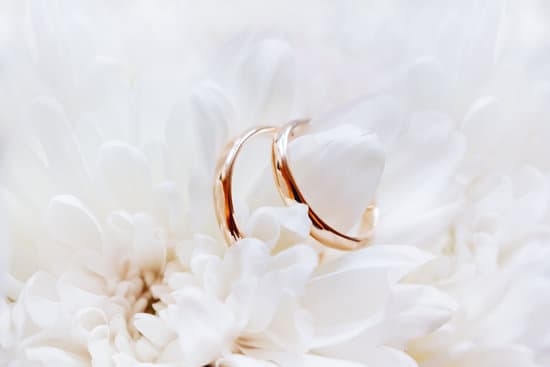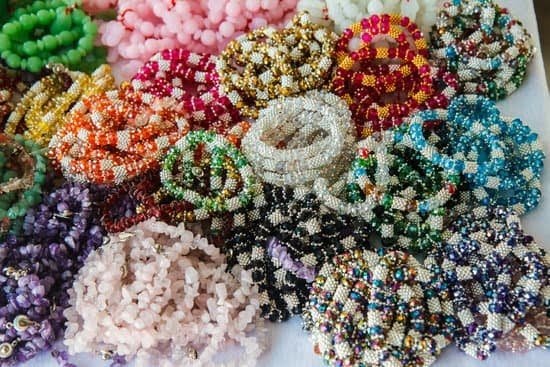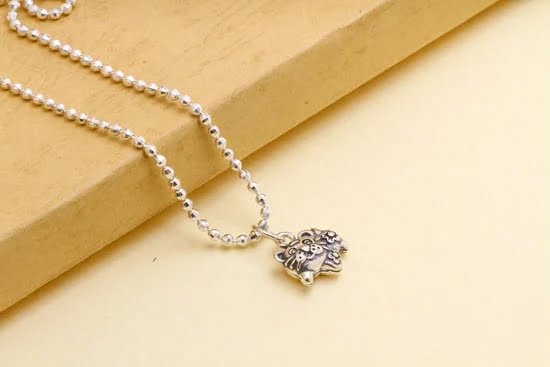Navigating through the intricate world of jewelry, one often encounters strange and intriguing symbols known as diamond and circle hallmarks. In this blog post, we delve into the meaning and significance of these hallmarks, unraveling the secrets they hold and shedding light on their importance in the jewelry industry.
Hallmarks have long been used in the world of jewelry as indicators of authenticity, quality, and craftsmanship. They provide a way for both jewelers and consumers to establish trust and ensure that what they are purchasing or creating is genuine. Understanding the symbolism behind these hallmarks is essential in recognizing their importance when it comes to buying or valuing jewelry.
Diamond hallmarks are particularly significant in the realm of jewelry. They can act as markers of diamond quality, weight, and other important attributes. By decoding diamond hallmarks, one can gain valuable insights into the characteristics of a particular piece of diamond jewelry.
On the other hand, circle hallmarks carry their own symbolism and serve different purposes depending on their specific design or markings. From representing metal purity to indicating a jeweler’s mark or country of origin, circle hallmarks play a vital role in determining the value and aura of a piece of jewelry.
Throughout this article, we will explore various types of diamond and circle hallmarks found on jewelry items. We will seek to demystify these symbols by examining their meanings, offering insights into their significance within the industry, and providing practical tips for identifying genuine hallmarks from counterfeits. As we embark on this journey through the world of jewelry hallmarking, we invite you to gain enlightenment about these mysterious symbols that enhance our understanding and appreciation for exquisite pieces of craftsmanship.
What are Hallmarks in the Context of Jewelry?
Hallmarks have been an essential part of the jewelry industry for centuries, serving as indicators of authenticity, quality, and craftsmanship. In the context of jewelry, a hallmark is a symbol or mark stamped on a piece of jewelry that signifies certain attributes about the piece. These marks can provide valuable information about the metal composition, country of origin, manufacturer, and other details that help determine the value and authenticity of the jewelry.
The Historical Significance of Hallmarks
Hallmarks have a long history that dates back to ancient civilizations. They were originally used as a means to identify the maker or assayer responsible for creating or verifying the quality of the metal used in jewelry. Over time, hallmarks became more standardized and regulated by guilds and government authorities to protect consumers from fraudulent practices.
In many countries today, hallmarking remains a legal requirement for jewelry sold commercially. The process involves sending the piece to an official assay office where it is tested for purity and then stamped with the appropriate hallmark. This ensures that customers can trust that they are purchasing genuine and high-quality jewelry.
How Hallmarks Contribute to Jewelry Quality Assurance
One of the primary functions of hallmarks in the context of jewelry is quality assurance. Hallmarks provide buyers with confidence in their purchases by indicating that certain standards have been met. For example, a gold hallmark guarantees that the piece contains a minimum percentage of gold content, such as 18 karat or 14 karat.
Furthermore, hallmarks can also reveal important information about gemstones used in jewelry. Diamond hallmarks are particularly significant in this regard as they can indicate crucial aspects such as diamond quality, weight, and cut grade. Certain diamond certification marks like GIA (Gemological Institute of America) or AGS (American Gem Society) indicate independent grading reports supporting diamond attributes.
The Symbolism of Diamonds in Hallmarks
Diamond hallmarks found on jewelry hold great symbolic significance and provide valuable information about the quality and characteristics of the diamonds used. These hallmarks serve as markers of diamond authenticity, quality, weight, and other important attributes. Understanding the symbolism behind diamond hallmarks can help consumers make informed decisions when purchasing diamond jewelry.
One common type of diamond hallmark is the certification mark. This indicates that the diamond has been independently evaluated by a gemological laboratory and meets specific criteria regarding its quality, such as cut, color, clarity, and carat weight. Examples of well-known certification marks include those from organizations like the Gemological Institute of America (GIA) or the American Gem Society (AGS). These marks assure consumers that they are purchasing genuine and high-quality diamonds.
Another type of diamond hallmark is the manufacturer mark or signature mark. This hallmark represents the jeweler or brand responsible for crafting or designing the jewelry piece. It acts as a unique identifier for the creator of the piece and can carry its own symbolism and reputation. Manufacturer marks may include initials, logos, or symbols specific to the jeweler.
Additionally, some diamond hallmarks are stone-cut specific marks that indicate a particular style or method used to cut the diamonds. These marks can vary depending on factors such as whether they are brilliant-cut, princess-cut, emerald-cut, etc. Stone-cut specific marks provide insight into the craftsmanship involved in creating each piece and add to their individuality.
Understanding these different types of diamond hallmarks allows consumers to assess the value and authenticity of diamond jewelry more effectively. By paying attention to these hallmarks when making purchases, individuals can ensure they are investing in genuine diamonds that meet their desired criteria.
| Type | Symbolism |
|---|---|
| Certification Mark | Indicates independent evaluation and quality assurance |
| Manufacturer Mark | Unique identifier for the creator of the jewelry piece |
| Stone-Cut Specific Mark | Reflection of craftsmanship and cutting style |
Decoding Circle Hallmarks
Circle hallmarks are intriguing symbols found on jewelry that hold important meaning and significance in the jewelry industry. These hallmarks often represent various aspects such as metal purity, origin, or specific jeweler marks. By understanding the meaning behind these circle hallmarks, one can gain valuable insights into the authenticity and value of a piece of jewelry.
One common representation of circle hallmarks is through purity marks. These marks indicate the quality and composition of the metal used in the jewelry piece. For example, a circle with a number inside may signify the percentage of gold in the piece, with 18K being 75% pure gold and 14k being 58% pure gold. Purity marks provide assurance to consumers regarding the quality and value of their jewelry.
Circle hallmarks can also represent the country of origin for a particular piece of jewelry. An engraved symbol within a circle may indicate where the item was manufactured or crafted. This information is not only interesting from a historical perspective but also helps consumers understand the craftsmanship associated with certain regions or countries.
In addition to purity and origin marks, circle hallmarks might also include designer or brand marks. These unique symbols within circles represent specific jewelers or brands associated with the creation of a particular piece of jewelry. These marks add another layer of authentication and can enhance both desirability and value for collectors or enthusiasts.
Understanding these various representations found within circle hallmarks is essential for anyone interested in purchasing authentic and high-quality jewelry pieces. By deciphering these symbols, individuals can make more informed decisions while selecting their next prized possession.
| Circle Hallmark Symbol | Representation |
|---|---|
| Circle with Number Inside | Purity Mark indicating metal composition |
| Engraved Symbol within Circle | Country of Origin Mark |
| Unique Symbol within Circle | Designer or Brand Mark |
Understanding the Different Types of Diamond Hallmarks
Diamond hallmarks are an essential component of the jewelry industry, playing a crucial role in establishing the value and authenticity of diamond jewelry. There are various types of diamond hallmarks that serve different purposes and provide valuable information about the diamonds they accompany. Here, we will dive into the different types of diamond hallmarks to help you better understand their significance.
- Certification Marks: These diamond hallmarks indicate that the diamond has been certified by a reputable gemological laboratory. Common certification marks include GIA (Gemological Institute of America), AGS (American Gem Society), and IGI (International Gemological Institute). These marks assure buyers that the diamond has undergone thorough testing and evaluation, ensuring its quality and authenticity.
- Manufacturer Marks: Manufacturer marks are unique symbols or initials indicating the company or individual responsible for crafting the piece of jewelry. These hallmarks may appear as a logo, initials, or a specific design element. They help trace the lineage and authenticity of the piece while establishing credibility for both makers and buyers.
- Stone-Cut Specific Marks: Some diamond hallmarks specifically identify the type of stone cut used in the jewelry piece. For example, an “RB” hallmark signifies a round brilliant cut, while an “EC” mark represents an emerald cut. This information allows buyers to assess how well a particular cut complements their personal style preferences.
By familiarizing yourself with these various types of diamond hallmarks, you can make more informed decisions when purchasing diamond jewelry. Understanding which characteristics each hallmark represents enables you to assess the quality and value attributed to different pieces accurately.
Additionally, it is worth noting that reputable jewelers typically provide documentation or certificates accompanying their diamond jewelry, which specify these different hallmarks and provide further assurance to customers regarding their legitimacy and value.
Demystifying Circle Hallmarks
In the vast world of jewelry, the presence of circle hallmarks adds an air of mystery and intrigue. What do these enigmatic symbols represent? In this section, we will delve into the meaning and significance behind circle hallmarks, shedding light on their relevance in the jewelry industry.
Circle hallmarks can signify different aspects within the world of jewelry. One common representation is metal purity. A circle with a number inside often indicates the percentage of precious metal content in a piece of jewelry. For example, a circle with “925” stamped inside would signify that the piece is made of sterling silver, which contains 92.5% pure silver.
In addition to purity marks, circle hallmarks can also indicate the country of origin for a particular jewelry piece. Many countries have their own unique hallmarking systems, using specific symbols or letters inside a circle to denote the country where the item was manufactured or assayed. These country-specific hallmarks help consumers identify and appreciate jewelry that originates from certain regions known for their exceptional craftsmanship or quality standards.
Furthermore, circle hallmarks often include designer or brand marks. Jewelry designers and brands use custom symbols or initials within a circle to authenticate their creations and establish brand identity. These hallmarks not only add prestige and value to a piece but also serve as a mark of distinction for both collectors and buyers seeking original creations from specific designers.
Therefore, when deciphering the meaning behind circle hallmarks on your jewelry, it is essential to consider these various factors such as metal purity, country of origin, and designer marks that can contribute to the overall allure and value of your cherished pieces.
How to Recognize Genuine Hallmarks from Counterfeits
Understanding the Importance of Identifying Genuine Hallmarks
In the world of jewelry, where authenticity and quality are prized, being able to recognize genuine hallmarks from counterfeits is essential. Genuine hallmarks serve as a stamp of approval, guaranteeing that the piece of jewelry has met certain standards and adheres to specific regulations.
On the other hand, counterfeit hallmarks can deceive buyers into believing they are purchasing a piece of jewelry with certain qualities that may not actually be present. Therefore, understanding how to distinguish between genuine and counterfeit hallmarks is crucial for both consumers and industry professionals alike.
Tips for Identifying Genuine Diamond Hallmarks
When it comes to diamond hallmarks, there are several key factors to consider when determining their authenticity. One important aspect to observe is the quality of stamping on the hallmark itself. Genuine diamond hallmarks are typically precise and legible, with crisp lines and clear details. Poorly stamped or blurry hallmarks may be an indication of a counterfeit.
Another clue to look out for is consistency in design and placement. Legitimate diamond hallmarks often follow a consistent pattern across different pieces from the same manufacturer or brand. If you notice significant variations in design or placement between multiple jewelry items claiming to have the same hallmark, it raises suspicions about their authenticity.
Additionally, it is worthwhile to research and familiarize yourself with common diamond certification marks recognized in the industry. Reputable certification bodies such as GIA (Gemological Institute of America) provide detailed information about their certification marks online. Being able to recognize these marks can help validate the authenticity of diamond jewelry and provide assurance about its quality.
Identifying Authentic Circle Hallmarks
Circle hallmarks encompass various aspects including metal purity marks, country of origin marks, and designer or brand marks. When assessing the authenticity of these hallmarks, similar principles apply as those for diamond hallmarks. Look for clear and precise stamping, consistent design patterns, and corroborating information from reputable sources.
Metal purity marks, also known as fineness marks or millesimal marks, indicate the quality of the metal used in the jewelry piece. They are typically stamped inside a circle alongside other hallmarks. Researching common purity marks can help you identify genuine hallmarks and differentiate them from counterfeit ones.
Country of origin marks represent the place where the jewelry piece was manufactured or where it underwent final processing. These marks are region-specific and can be found inside a circle or outside it, depending on regulations. Familiarizing yourself with country-specific hallmarking systems can assist in recognizing genuine circle hallmarks associated with specific countries or regions.
Lastly, designer or brand marks embedded within circles convey information about the creator or manufacturer of the jewelry item. Similar to diamond hallmarks, consistency in design across different pieces is often indicative of genuineness.
By paying attention to these details and acquiring knowledge about common designs and certification marks used by reputable manufacturers and certifying bodies, one can become adept at recognizing genuine hallmarks from counterfeits, ultimately making informed purchasing decisions that align with their desired standards of authenticity and quality.
The Legal Implications of Hallmarking in the Jewelry Industry
In the world of jewelry, hallmarking plays a crucial role in ensuring authenticity and protecting consumers. The legal implications of hallmarking are extensive, as governments around the world have implemented regulations to govern the practice. Hallmarking is not only important for establishing trust between buyers and sellers but also serves as a means to combat counterfeit jewelry.
One of the main legal obligations surrounding hallmarking is the requirement for jewelers to register their marks with a recognized assay office. This registration process ensures that each jeweler’s mark is unique, preventing fraudulent use by unauthorized individuals. By registering their marks, jewelers are making a legal commitment to uphold certain standards of quality and craftsmanship associated with their brand.
Furthermore, hallmarking laws often dictate specific guidelines regarding metal purity levels. These regulations help protect consumers from purchasing jewelry made from inferior or undisclosed materials. For example, in many countries, gold jewelry must meet minimum purity criteria to be eligible for hallmarking. This ensures that customers can make informed decisions about the quality and value of the jewelry they purchase.
Additionally, failure to comply with hallmarking regulations can result in severe penalties for both individuals and businesses operating within the jewelry industry. Regulating bodies have the authority to issue fines, revoke licenses, and even impose criminal charges on those found guilty of violating hallmarking laws. These strict consequences serve as a strong deterrent against fraudulent practices and safeguard the integrity of the jewelry market.
Conclusion
In conclusion, exploring the mysteries of diamond and circle hallmarks on jewelry can be a fascinating journey that unveils the secrets and significance behind these symbols. Hallmarks serve as indicators of authenticity, quality, and craftsmanship in the world of jewelry. Diamonds in hallmarks hold special meaning and act as markers of diamond quality, weight, and other significant attributes. On the other hand, circle hallmarks represent different aspects such as metal purity, origin, or specific jeweler marks.
Understanding the different types of diamond and circle hallmarks is essential for establishing the value and authenticity of jewelry. Whether it’s certification marks, manufacturer marks, stone-cut specific marks or purity marks, country of origin marks, and designer or brand marks – each hallmark carries its own importance and contributes to the overall value and aura of a jewelry piece.
Recognizing genuine hallmarks from counterfeits is crucial for consumers to ensure they are making informed purchases. By paying attention to signs such as poor stamping quality or mismatched characters, individuals can protect themselves from counterfeit jewelry.
Furthermore, hallmarking practices have legal implications in the jewelry industry. They play a significant role in consumer protection by ensuring that regulations are met and counterfeit jewelry is combated.
Frequently Asked Questions
What does a diamond shaped symbol mean on jewelry?
A diamond-shaped symbol on jewelry typically represents the presence of a gemstone, specifically a diamond. This symbol is used to indicate that the piece of jewelry contains one or more diamonds as part of its design. Diamonds are highly valued gemstones known for their brilliance and durability, making them a popular choice for adornments in jewelry.
What does 925 C with diamond symbol mean on a ring?
The marking “925 C” with a diamond symbol on a ring indicates that the ring is made of sterling silver. The number 925 refers to the purity of the silver used, representing that it consists of 95% pure silver and 7.5% other metals, usually copper.
The letter “C” often signifies that the ring was produced by Charles & Colvard, a well-known jewelry company specializing in lab-grown moissanite stones, which may be present on the ring as well.
How do I identify my jewelry markings?
Identifying jewelry markings can be done through careful examination and understanding of common symbols and numbers used in the industry. Start by looking for marks such as “925,” which indicates sterling silver or “14K”/”18K,” indicating gold purity levels of 14 karats or 18 karats respectively.
Other markings may include symbols representing gemstones like diamonds or birthstones, manufacturer logos or initials, or even country-specific markings denoting country of origin. Researching common jewelry markings online or consulting with a professional jeweler can also help to decipher unique markings on your specific piece of jewelry.

Welcome to my jewelry blog! My name is Sarah and I am the owner of this blog.
I love making jewelry and sharing my creations with others.
So whether you’re someone who loves wearing jewelry yourself or simply enjoys learning about it, be sure to check out my blog for insightful posts on everything related to this exciting topic!





